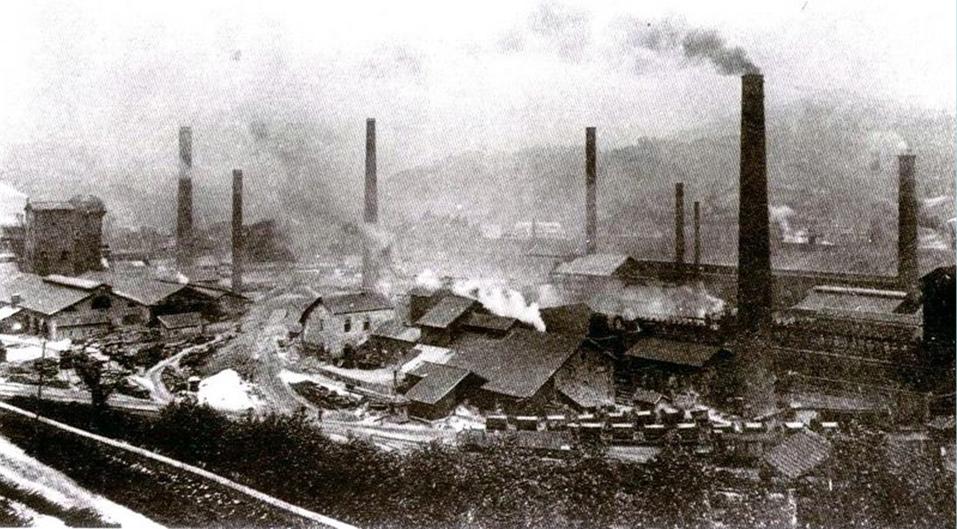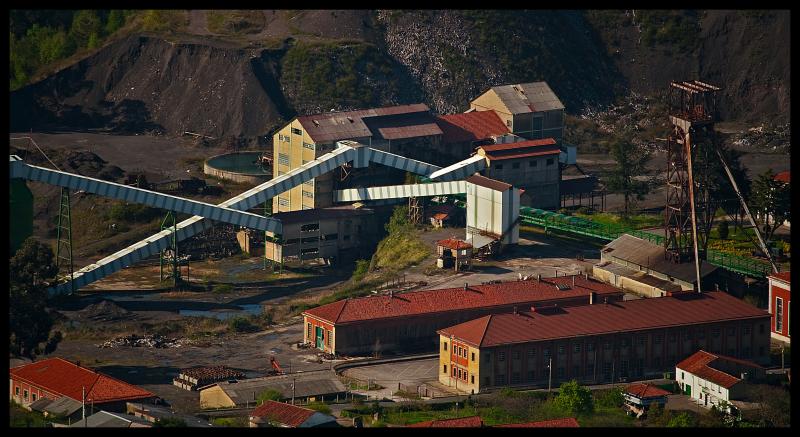|
Autovía AS-I
The AS-I is a highway in Asturias, Spain that connects Mieres and Gijón. It is also known as ''Autovía Minera'' because of its travel through the mining towns in Asturias like Mieres or Langreo, passing near La Camocha coal mine before finishing in Gijón. The AS-I was made between 2000 and 2003 by the Government of the Principality of Asturias. The last junctions opened were the Enlace de Ceares in Gijón, in 2007, El Comercio, 22 February 2007 and the one in Pola de Siero. Route References {{DEFAULTSORT:AS-I[...More Info...] [...Related Items...] OR: [Wikipedia] [Google] [Baidu] |
Mieres
Mieres is a municipality of Asturias, northern Spain, with approximately 38,000 inhabitants. The municipality of Mieres is made up of the capital, Mieres del Camino and the villages of Baiña, Figaredo, Cenera, Loredo, La Peña, La Rebollada, Santullano, Santa Rosa, Seana, Ujo, Urbies, Valdecuna, Santa Cruz, Ablaña, Turón, Gallegos, Bustiello. History Mieres is the heart of the coal mining industry in Spain. The topography of Mieres is mountainous with the greatest population centers being located in the valley along the banks of the Caudal River (''Río Caudal'') valley in the center of Asturias. Before the Spanish Industrial Restructuring Mieres was one of the industrial backbones of Asturias, and hosted 70000 inhabitants in the 1960s. Today Mieres shelters a campus of the University of Oviedo and different museums in relation with the industrial heritage. The municipality of Mieres is served by bus routes and the regional rail lines Renfe Feve and Renfe Cercanias, conn ... [...More Info...] [...Related Items...] OR: [Wikipedia] [Google] [Baidu] |
Gijón
Gijón () or () is a city and municipality in north-western Spain. It is the largest city and municipality by population in the autonomous community of Asturias. It is located on the coast of the Cantabrian Sea in the Bay of Biscay, in the central-northern part of Asturias; it is approximately north-east of Oviedo, the capital of Asturias, and from Avilés. With a population of 271,780, Gijón is the 15th largest city in Spain. Gijón forms part of a large metropolitan area that includes twenty councils in the center of the region, structured with a dense network of roads, highways and railways and with a population of 835,053 inhabitants in 2011, making it the seventh largest in Spain. During the 20th century, Gijón developed as an industrial city in the steel and naval industries. However, due to the decline in manufacturing in these industries, in recent years Gijón is undergoing a transformation into an important tourist, university, commercial and R&D center. Gijón ... [...More Info...] [...Related Items...] OR: [Wikipedia] [Google] [Baidu] |
Autovía
An ''autovía'' is one of two classes of major highway in the Spanish road system similar to a British motorway or an American freeway. It is akin to the autopista, the other major highway class, but has fewer features and is never a toll road. Some distinguishing features of an ''autovía'' are that it must be divided by a median, it must have restricted access, and it cannot be crossed by other roads. While autopistas are generally new routes, ''autovías'' are normally improvements to existing roads, so they may have tighter curves and less safe accesses, often with shorter acceleration lanes. However, both have nominal speed limits of . Rest areas are usually or 2 hours apart. There is usually a safety lane along the median. Although generally state-owned and financed, there are some ''autovías'' which are actually built and maintained by private companies, such as Pamplona-Logroño A-12. The company assumes the building costs and the Autonomous Community where they are ... [...More Info...] [...Related Items...] OR: [Wikipedia] [Google] [Baidu] |
Asturias
Asturias (, ; ast, Asturies ), officially the Principality of Asturias ( es, Principado de Asturias; ast, Principáu d'Asturies; Galician-Asturian: ''Principao d'Asturias''), is an autonomous communities of Spain, autonomous community in northwest Spain. It is coextensive with the provinces of Spain, province of Asturias and contains some of the territory that was part of the larger Kingdom of Asturias in the Middle Ages. Divided into eight Comarcas of Asturias, ''comarcas'' (counties), the autonomous community of Asturias is bordered by Cantabria to the east, by Province of León, León (Castile and León) to the south, by Province of Lugo, Lugo (Galicia (Spain), Galicia) to the west, and by the Cantabrian Sea, Cantabrian sea to the north. Asturias is situated in a mountainous setting with vast greenery and lush vegetation, making it part of Green Spain. The region has a oceanic climate, maritime climate. It receives plenty of annual rainfall and little sunshine by Spanish ... [...More Info...] [...Related Items...] OR: [Wikipedia] [Google] [Baidu] |
Spain
, image_flag = Bandera de España.svg , image_coat = Escudo de España (mazonado).svg , national_motto = ''Plus ultra'' (Latin)(English: "Further Beyond") , national_anthem = (English: "Royal March") , image_map = , map_caption = , image_map2 = , capital = Madrid , coordinates = , largest_city = Madrid , languages_type = Official language , languages = Spanish language, Spanish , ethnic_groups = , ethnic_groups_year = , ethnic_groups_ref = , religion = , religion_ref = , religion_year = 2020 , demonym = , government_type = Unitary state, Unitary Parliamentary system, parliamentary constitutional monarchy , leader_title1 = Monarchy of Spain, Monarch , leader_name1 = Felipe VI , leader_title2 = Prime Minister of Spain ... [...More Info...] [...Related Items...] OR: [Wikipedia] [Google] [Baidu] |
Langreo
Langreo (; ast, Llangréu) is a municipality and town in northern Spain, in Asturias. It is the 4th largest town of Asturias with 43,000 inhabitants. Langreo is located in the centre of Asturias, approximately south-east of Oviedo. It was an important mining and metallurgical center. In the neighbourhood fruit and cider are produced, and there are still important coal mines, foundries, and factories for the manufacture of coarse cloth. History According to a legend Langreo was the place where the Moorish governor Munuza was killed while trying to flee from Asturias at the beginning of the Reconquest. Langreo was settled by the Romans, who built a large Roman bridge that is not conserved today. In the past, it was one of the most important mining and metallurgical points of Spain since the 18th century, and it was also well known because of workers struggles and its cultural life. The 3rd railway to be built in the Iberian Peninsula was the FC of Langreo. The Factory of La ... [...More Info...] [...Related Items...] OR: [Wikipedia] [Google] [Baidu] |
La Camocha, Asturias Coal Mine
La Camocha is a former coal mine which is seven kilometers south of Gijon, Asturias, Spain. It was operated by Minas la Camocha SA, which is affiliated with González y Díez SA. The former mining railway that once linked the coal mine of La Camocha to Veriña has been replaced by La Camocha Greenway, a trail for hikers and cyclists. The trade union A trade union (labor union in American English), often simply referred to as a union, is an organization of workers intent on "maintaining or improving the conditions of their employment", ch. I such as attaining better wages and benefits ( ... movement '' Comisiones Obreras'' (CC.OO.) was born in the La Camocha mine.El País. En La Camocha, donde nació CCOO, ganó este sindicato' References Coal mines in Spain Buildings and structures in Asturias Gijón History of Asturias {{Asturias-stub ... [...More Info...] [...Related Items...] OR: [Wikipedia] [Google] [Baidu] |
Pola De Siero
Pola de Siero (in Asturian and as official name La Pola Siero, and also known as La Pola colloquially) is a town in the autonomous community of Asturias on the north coast of the Kingdom of Spain. It is the administrative capital of the municipality (concejo) of Siero. Pola de Siero is located in the centre of Asturias, approximately east of the regional Capital Oviedo and 16 km south of Gijón. Siero borders on the municipalities of Gijón, to the north, Langreo and San Martín del Rey Aurelio, to the south, Llanera and Oviedo, to the west, and Sariego, Nava and Bimenes, to the east. It entirely surrounds the municipality of Noreña and touches Villaviciosa at one point: La Peña de los Cuatro Jueces (The Mount of the Four Judges) According to the Instituto Nacional de Estadística (Spain), Pola de Siero has a population of 12,615 making it the largest population centre in the municipality and the seventh largest in Asturias. Pola de Siero was founded by a charter of ... [...More Info...] [...Related Items...] OR: [Wikipedia] [Google] [Baidu] |
Olloniego
Olloniego is a parish of the municipality of Oviedo, Asturias, Spain. History In 1145, while reigning Alfonso VI of León and Castile, evidences were found pointing out that Olloniego was one of the main entrances to Oviedo. In the 16th century, the village was sold by Philip II of Spain Philip II) in Spain, while in Portugal and his Italian kingdoms he ruled as Philip I ( pt, Filipe I). (21 May 152713 September 1598), also known as Philip the Prudent ( es, Felipe el Prudente), was King of Spain from 1556, King of Portugal from ... to Rodrigo Bernaldo de Miranda. In the 19th century, Olloniego was the mining zone of the municipality of Oviedo, but since the 1990s, the parish has been developing as an important industrial zone. References Parishes in Oviedo {{asturias-geo-stub ... [...More Info...] [...Related Items...] OR: [Wikipedia] [Google] [Baidu] |
Siero
Siero is a municipality of the province and autonomous community of Asturias, in northern Spain. Its capital is Pola de Siero Pola de Siero (in Asturian and as official name La Pola Siero, and also known as La Pola colloquially) is a town in the autonomous community of Asturias on the north coast of the Kingdom of Spain. It is the administrative capital of the municipal .... Parishes Politics Councillors distribution in local elections References External links *Concejo de Siero Municipalities in Asturias * {{asturias-geo-stub ... [...More Info...] [...Related Items...] OR: [Wikipedia] [Google] [Baidu] |
Noreña
Noreña is a municipality in the Autonomous Community of the Principality of Asturias, Spain. It is surrounded by the municipality of Siero. It is the smallest municipality in Asturias and the second smallest in Spain, and one of the ones with the highest per capita income and population density in the Principality. Noreña is also the name of a parish in the municipality, and the municipal capital. Parishes * Celles (San Juan de Celles) * Noreña (Santa María de Noreña) * Santa Marina Notable people * Alberto Colunga Cueto, Dominican priest and Bible translator, was born in Noreña. * Enrique Rodríguez Bustelo Enrique () is the Spanish variant of the given name Heinrich of Germanic origin. Equivalents in other languages are Henry (English), Enric (Catalan), Enrico (Italian), Henrik (Swedish, Danish, and Norwegian), Heinrich (German), Hendrik, Henk (Du ..., architect Gallery File:Iglesia de Santa María de Noreña.jpg, 'Santa María de Noreña' Church File:Escuelas ... [...More Info...] [...Related Items...] OR: [Wikipedia] [Google] [Baidu] |
Transport In Asturias
Transport (in British English), or transportation (in American English), is the intentional movement of humans, animals, and goods from one location to another. Modes of transport include air, land (rail and road), water, cable, pipeline, and space. The field can be divided into infrastructure, vehicles, and operations. Transport enables human trade, which is essential for the development of civilizations. Transport infrastructure consists of both fixed installations, including roads, railways, airways, waterways, canals, and pipelines, and terminals such as airports, railway stations, bus stations, warehouses, trucking terminals, refueling depots (including fueling docks and fuel stations), and seaports. Terminals may be used both for interchange of passengers and cargo and for maintenance. Means of transport are any of the different kinds of transport facilities used to carry people or cargo. They may include vehicles, riding animals, and pack animals. Vehicles may ... [...More Info...] [...Related Items...] OR: [Wikipedia] [Google] [Baidu] |




_03.jpg)
